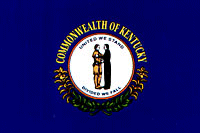
ASHBY, CLAYBORN WILLIS, JR
Name: Clayborn Willis Ashby, Jr.
Rank/Branch: E5/US Navy
Unit: Observation Squadron 67
Date of Birth: 16 November 1946
Home City of Record: Louisville KY
Date of Loss: 17 February 1968
Country of Loss: Laos
Loss Coordinates: 164959N 1055858E (XD030612)
Status (in 1973): Killed/Body Not Recovered
Category: 3
Aircraft/Vehicle/Ground: OP2E
Other Personnel In Incident: Chester Coons, Frank Dawson; Paul Donato; Glen
Hayden; James Kravitz; James Martin; Curtis Thurman; James Wonn (all missing)
Source: Compiled by Homecoming II Project with the assistance of one or
more of the following: raw data from U.S. Government agency sources,
correspondence with POW/MIA families, published sources, interviews.
Date Compiled: 1 March 1990
REMARKS: CRASH FND - NO PARBEEP - NO PERS - J
SYNOPSIS: The Lockheed P2 "Neptune" was originally designed for submarine
searching, using magnetic detection gear or acoustic buoys. Besides flying
maritime reconnaissance, the aircraft served as an experimental night attack
craft in the attempt to interdict the movement of enemy truck convoys. Another
model, the OP2E, dropped electronic sensors to detect truck movements along the
supply route through Laos known as the "Ho Chi Minh Trail".
The Ho Chi Minh Trail was used by the North Vietnamese for transporting weapons,
supplies and troops. Hundreds of American pilots were shot down trying to stop
this communist traffic to South Vietnam. Fortunately, search and rescue teams in
Vietnam were extremely successful and the recovery rate was high.
Still there were nearly 600 who were not rescued. Many of them went down along
the Ho Chi Minh Trail and the passes through the border mountains between Laos
and Vietnam. Many were alive on the ground and in radio contact with search
and rescue and other planes; some were known to have been captured. Hanoi's
communist allies in Laos, the Pathet Lao, publicly spoke of American prisoners
they held, but when peace agreements were negotiated, Laos was not included,
and not a single American was released that had been held in Laos.
The Neptune had precise navigational equipment and accurate optical bombsight.
Radar was housed in a well on the nose underside of the aircraft, and radar
technicians felt especially vulnerable working in this glass bubble nosed
aircraft. The aircraft could place seismic or acoustic devices within a few
yards of the desired point. To do so, however, the OP2E had to fly low and
level, making it an easy target for the enemy's anti-aircraft guns that were
increasing in number along the Trail.
On February 17, 1968, an OP2E from Observation Squadron 67 departed Thailand in
a flight of four aircraft on an operational mission over Laos. The crew of the
aircraft included Commander Glenn M. Hayden; Lt.Jg. James S. Kravitz; Lt. Curtis
F. Thurman; Ensign James C. Wonn; AO2 Clayborn W. Ashby, Jr.; ADJ2 Chester L.
Coons; AN Frank A. Dawson; ATN1 Paul N. Donato; and AN James E. Martin.
After completion of the first target run, the aircraft reported to its fighter
escort and forward air control aircraft that it had been hit by small arms fire
but would continue with the second target run.
During the second run, the fighter escort reported the starboard engine of the
OP2 on fire. The OP acknowledged the report and aborted the rest of their
mission to return to home base. The last radio transmission from the aircraft
was, "we're beat up pretty bad."
The fighter escort climbed to the top of the overcast to await the OP2
rendezvous, but the aircraft never emerged from the cloud base. The fighter
dropped below the clouds to search for the OP2 and found burning wreckage. No
parachutes were seen, nor were any emergency radio beepers heard. Search and
rescue efforts were negative. Investigation of the crash site was not feasible
because of enemy presence in the area. The aircraft crashed about 34 kilometers
northwest of Xepone in Savannakhet Province, Laos. The crash site was situated
2,800 meters south of Route 91 in rugged terrain on the side of a 550 meter
ridge, approximately 4 kilometers northwest of Muang Phin. The aircraft was on
a reconnaissance mission and carried no ordnance.
Because there was no direct witness to the crash of the OP2, it is not known
whether any of the crew of nine survived, but it was assumed that they did not.
All nine aboard were classified Killed, Body Not Recovered. Although this
aircraft went down in a relatively populous area, it is not known whether the
enemy knows the fates of the crewmembers.
Since the war ended, nearly 10,000 reports relating to Americans missing in
Southeast Asia have been received by the U.S. Government. Many authorities have
reluctantly concluded that hundreds of them are still alive in captivity.
Whether the crew of the Neptune that went down on February 17, 1968 is among
them is not known. What seems certain, however, is that we must do everything
possible to bring our men home.
(HOME)
Email: WebMaster
Angelfire - Easiest Free Home Pages
